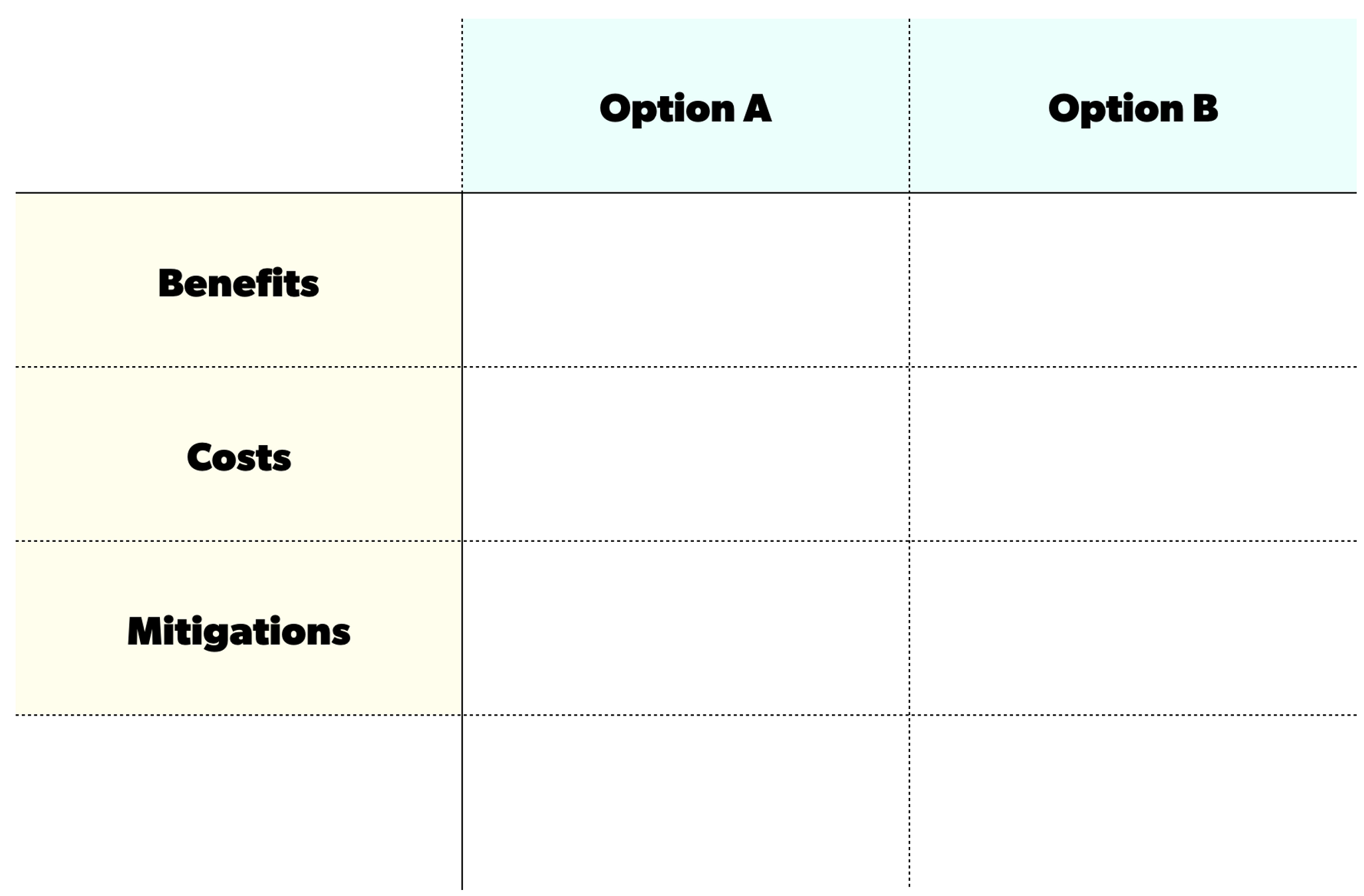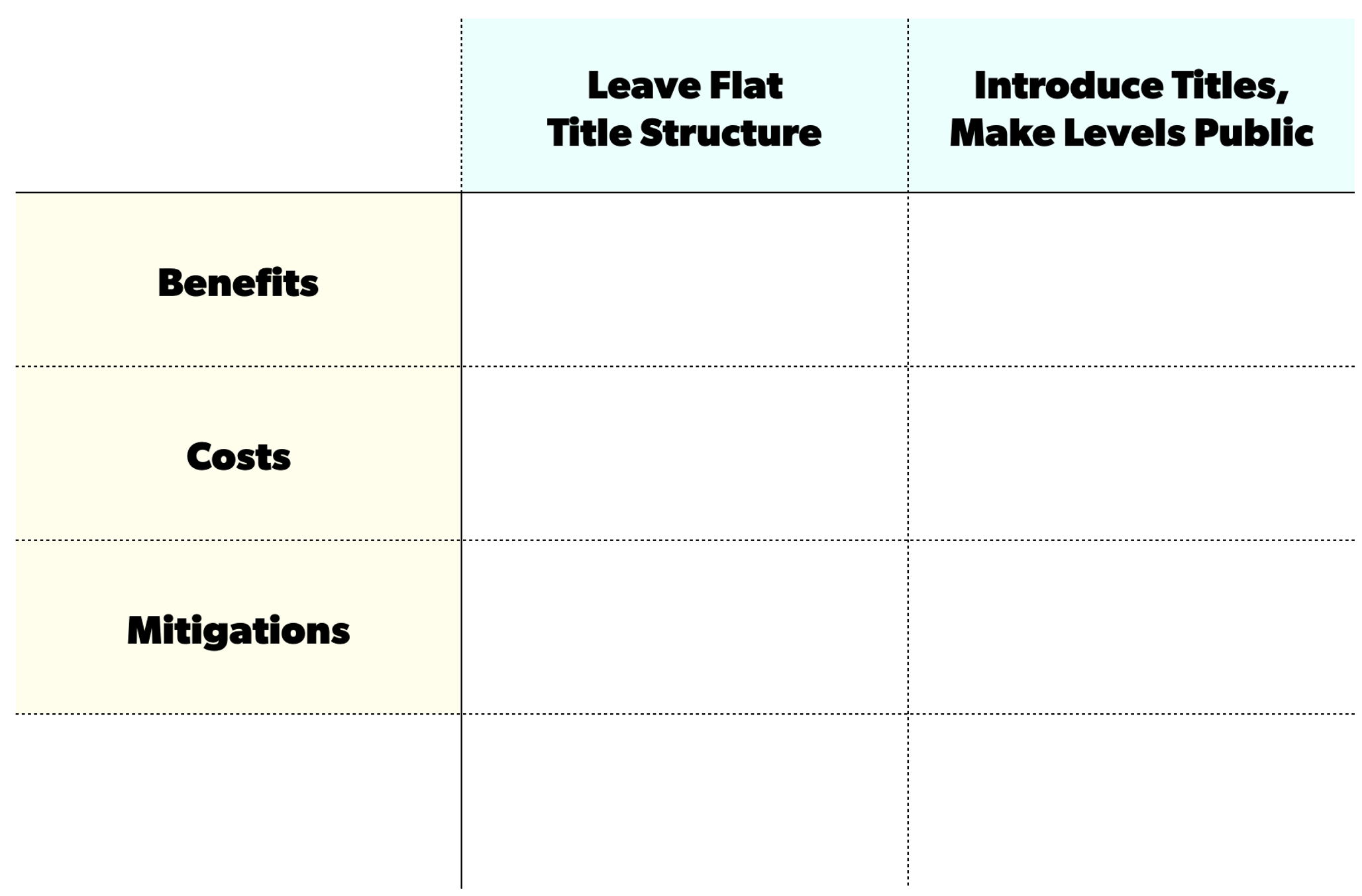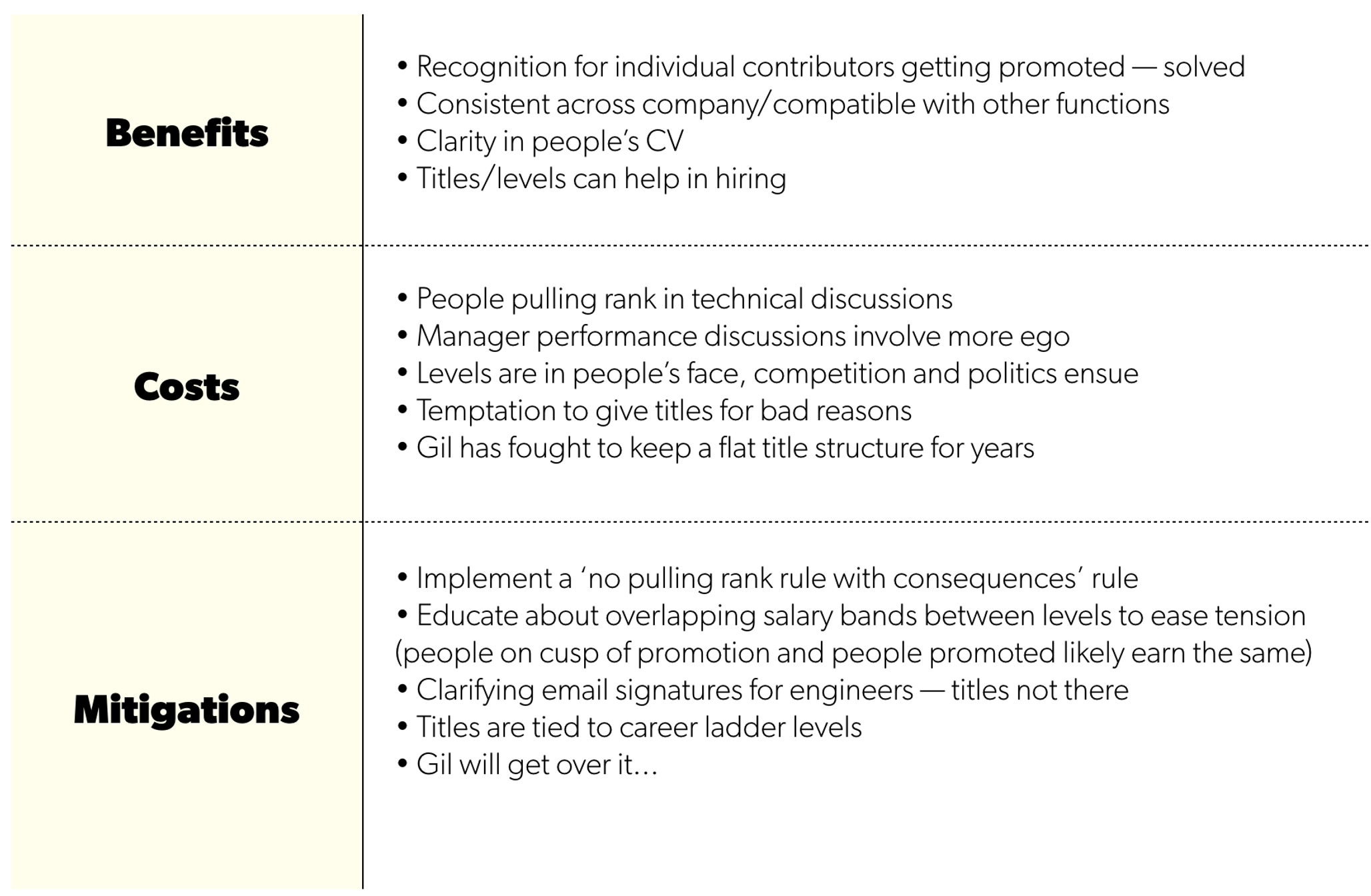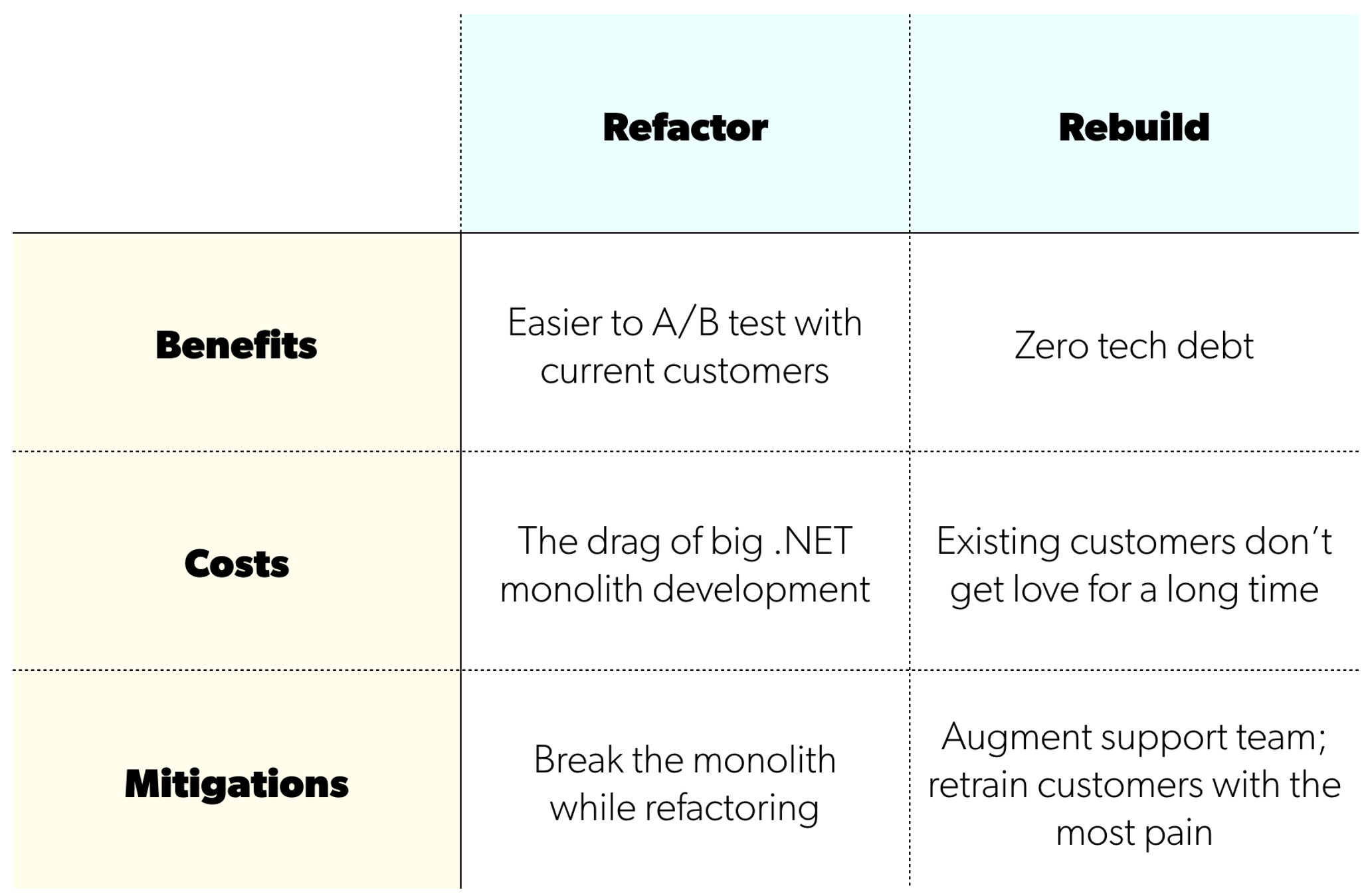Gil Shklarski has spent his career solving incredibly complex problems. Whether it was making Facebook safer or working on infrastructure for Microsoft’s maps, he’s always approached his work with a mathematician’s ability to break enormous missions into problem sets to be solved. Five years ago, he joined Flatiron Health as head of technology, and was tasked with building the oncology industry's first cloud-based software platform to manage clinical care and learn from the experience of every patient. Sounds like a big enough challenge — but scaling the technical team to do it quickly proved to be a massive undertaking on its own.
When Shklarski came aboard, the company was four employees building tech used by one clinic. Two years later, headcount was 135, serving 200 clinics, and he confronted a problem with the potential to undermine it all. It wasn’t a technical problem, or a medical one. It was a people problem: his engineering leaders had a hard time making streamlined decisions, whether it was negotiating with product leaders or creating alignment around an internal debate.
It wasn’t immediately clear how he’d turn things around. But Shklarski, now CTO, had been using a framework, introduced to him by his executive coach Marcy Swenson, that had helped him navigate his own hairy decisions. He realized how helpful that same tool would be if it were applied team-wide. In this exclusive piece — based on a talk he gave at First Round’s CTO Unconference — Shklarski walks through the matrix he adapted to enable his increasingly autonomous and fragmented team to keep moving fast and smart through tough choices.
Xanax for Decision-Making
This is the nickname Shklarski’s framework has earned for itself at Flatiron. But before it became useful, they had to identify the exact nature of the problem and anxiety they were experiencing.
“As you scale, one team turns into many, and each one needs to run on its own and feel good about making decisions locally without parental supervision,” he says. If a company fails to do this, its progress will languish and its culture will erode. “Teams that can’t commit are a drag on leadership’s capacity, preventing them from working on strategic problems by keeping them busy with local ones. This will impact growth, deflate morale, cause attrition.”
Even if this isn’t happening quite yet, it’s a fork in the road every growing company will one day arrive at — hopefully prepared for what’s next. In this context, being prepared means making everyone on board feel empowered to make smart, strong decisions for the company. It’s a rare startup that actually anticipates and manages this transition in advance.
Shklarski realized it was happening at Flatiron when the role of technical lead started to become unattractive. People were uncomfortable facilitating decision making; they didn't want to negotiate with their colleagues. Instead of stepping in to resolve individual issues as CTO, he decided to solve for his team's reluctance to make quick decisions in the first place.
“Google did an enormous amount of research on why some teams are effective while others are not,” he says, referring to Project Aristotle — the landmark study that sought a recipe for creating successful teams by dissecting dynamics, personality traits, skills, and backgrounds. “What they discovered was that on successful teams, members feel psychologically safe.”
Psychological safety is a combination of empathy, time management and good conversational turn-taking. This blend makes people feel heard and appreciated.
When a team expands quickly, psychological safety can be an early casualty. A bunch of new, rookie managers get anointed to handle a continuous stream of problems. Some of the problems are new, some are old. Many get revisited, because serving five customers is radically different than serving 100. For managers, it can feel like there’s no time to consult others or incorporate feedback. They either end up making a bunch of judgment calls themselves or relying on slow, uneasy team consensus. At Flatiron, this resulted in a lot of crippling, culture-threatening stress.
“Eventually, we asked our Learning and Development team to interview our engineering leads about what was causing them stress,” Shklarski says. “It always came back to the difficulty around making decisions. There was little alignment among the different voices on each team, and a lack of strong leadership to help negotiate a path forward.”
Shklarski saw the framework from his coach as a tool for his team leads to quickly and efficiently create alignment around decision-making — and at the same time, foster a level of psychological safety that would take fear, self-consciousness and anxiety out of the process.
“Applying it to my own decisions helped me see things from others’ perspectives, removed my biases about how other people would judge my actions, and helped me stay motivated by what was right rather than what others or my boss would think," he says. "I wanted leaders on my team have this tool at their disposal."
The Matrix
It's important to understand the distinction between good decision-making and good decisions. You can make a good decision that will still create chaos throughout your team if people aren't happy with how it was made. This framework is about improving team alignment while reducing stress in the decision-making process.
There are two types of decisions:
- Type 1: Irreversible decisions
- Type 2: Reversible decisions
This system can be used for either. But Shklarski’s goal was to optimize for Type 2 decisions. Those come up the most often, and are exactly the sort of thing that shouldn’t be escalated to top leadership. “People will expect and accept scrutiny and overhead for Type 1 decisions," he says. "Streamlining Type 2 decisions makes teams and the people on them happy, allowing things to be accomplished without the usual stress.”
It starts with a basic chart, with the two (or more) options you’re deciding between at the top. Down the left-hand column, you have benefits, costs, and — uniquely — mitigations.

This can be a quick, structured thought process for someone making a decision alone. But if a team is working together through a suggestion, Shklarski suggests writing it on a whiteboard or in a Google Doc that everyone can see. He prefers Google Docs because it’s more collaborative — rather than putting the onus on someone to write or interpret what others mean.
This chart might look like a generic pro/con list, but the real magic happens when you put it to work. In particular, it lives in the row labeled ‘Mitigations.’
“The leader of the exercise should really be more of a facilitator, rather than placing their own opinions and judgments at the forefront,” Shklarski says. “She should encourage everyone to ideate and include the social considerations or ramifications of each option — not just the cut and dry causes and effects on the work. For example — will a boss be made happy by a certain decision? Will a team be energized? Will someone who deserves visibility in the organization be given an opportunity?”
The facilitator also needs to ensure no one is dominating the conversations and everyone gets to document their perceived benefits and concerns. This contributes to psychological safety by fostering conversational turn-taking.
Filling in the Cost and Benefit slots for each choice should be pretty straightforward. Notably, the Cost row should also emphasize the risks associated with each choice.
The only other thing to watch out for is making sure you’re generating enough in each column, and thinking holistically around exactly how selecting a particular path will play out in reality. Who will be helped? Who will be upset? What are the long-term impacts? The short-term impacts? As the company grows, how will these impacts change? Really dig in and project each choice into the future.
Then you get to Mitigations. “This is where the facilitator should walk the group through how to soften, allay, or distribute the risks associated with each of the options,” Shklarski says. “If you didn’t do it already, this exercise forces you and everyone to think through what it would really be like if that option were selected.”
Having mitigation conversations elicits opinions and feedback from a wider range of people, and prompts the group to see the situation from other points of view — including those of other departments within the company that might touch or be affected by the decision at hand. It also gets everyone collaborating on possible solutions to the negative impacts on others.
Here are some best practices for mitigating risks and generating this row of the matrix:
Ask yourself questions that add an objective shifted perspective. Examples:
- What would be best for our customers?
- What would be best for the patients? (Or people who are ultimately impacted.)
- What would the board want us to do? (The board represents objective good for the company.)
Ask yourself questions about addressing the risk from a different angle. Examples:
- What is the root cause of that cost/risk, can we mitigate it?
- Can we address this tech-debt/management-debt in other ways?
- Can we resolve the underlying anxiety through other means?
- Is there a long-term/short-term tradeoff we can make?
The exercise allows everyone on the team to put their fears, hopes and social anxieties into the decision-making process, and see them taken seriously as important factors.
Sometimes through the conversation you end up adding a Column C or D because new options or ideas emerge with different or fewer risks.
The Matrix in Practice
Last year, Shklarski applied this framework to help Flatiron’s engineering team make a contentious decision. Should they have more descriptive job titles signifying seniority or not? In this case, the matrix helped defuse what could have been a very heated situation, and made everyone empathize with the tradeoff and feel more comfortable with the outcome. Here’s a detailed breakdown of how it worked.
One of the engineers pointed out that the sales team had more descriptive titles (manager, director, senior manager, etc.) while the engineering team did not (everyone’s title was engineer). Others agreed. Factions lobbied for either side. This is exactly the type of decision that could have been a deadlock in the past.
Shklarski invited his top engineering leaders and technical HR lead to meet and align on the decision, presenting the following chart on Google Docs:

Steps:
- He asked the group to fill in the benefits and costs of each decision, and to take a pass at what might be done to mitigate the related costs.
- This exercise helped those involved see the tradeoffs and imagine what each scenario would look like after the decision was made. People's emotions and social ramifications were emphasized.
- Reconvening as a group, they discussed ideas for addressing the negatives of either plan. A decision was reached collaboratively, instead of being handed down, based on what would produce a positive net impact for the greatest number of people.
“When I make decisions this way, I always say, ‘Okay, this is where we ended up. Here is your ‘24 hour freakout window, during which we can revisit the decision,'" Shklarski says. "Unless someone says something different in the next 24 hours, we’ll go with it."
Here's how the matrix looked at the end of the exercise:
A: Leave flat title structure

B: Introduce titles, make levels public

In the end, the group decided to adopt titles because it would confer more benefits, and the associated costs could be mitigated to an acceptable level. Essentially, there was more to gain and it was possible to control losses.
“No one complained about the ultimate decision in this case,” say Shklarski. “And the empathy that the exercise generated is evident in that result.”
As he points out, the charts generated during decision-making meetings can and should be stored to refer to later — by new employees understanding the evolution of things, by teams revisiting old decisions, by people proposing something new after some time has gone by, etc.
Here’s another example.
Flatiron had to decide whether to refactor a piece of billing software used by only a small subset of its users — the other option was to rebuild a similar product from scratch. The existing software component was part of a big .NET monolith it had inherited through the acquisition of another company, and for a while wasn’t getting any love aside from bug fixes. Shklarski wasn’t involved — he heard about the matrix being used by a tech lead to untangle this choice secondhand. That’s how commonplace it had become.
Here’s roughly how the matrix came together (of course there was far more context provided in each cell):

Again, the mitigations row was the secret sauce. It provided a place for all opinions to be documented. It served as a forcing function for people to hear, understand, and empathize with others’ points of view and proposed tradeoffs. And it made the task of aligning everyone an organic process. In the end, Flatiron decided to refactor and improve the software in place.

Making the Matrix a Cultural Touchstone
Since adapting this matrix to help teams make decisions together, Flatiron has used it to:
- Decide how to split responsibilities between three adjacent teams.
- Make tradeoffs around prioritizing a team’s quarterly plan.
- Decide whether to build or buy a certain clinical content layer for their SaaS offering.
- Decide between options for an identity management system.
- Decide how to use headcount budget for one of their infrastructure teams.
- Decide whether to self-host a third-party software or use its cloud version.
- Decide on a hiring committee structure for executives.
Time and effort was put into training the whole team up on how to use and benefit from the matrix. There were several keys to making its implementation at Flatiron effective:
Senior sponsorship. Have leaders within teams endorse the framework as a great way to make decisions. Have them lead by example by describing how they’ve applied it to make critical choices for themselves. It won’t become a hallmark of your team unless the leadership makes it ubiquitous. If you want to persuade a senior person to use the framework on their team, advise them to use it in their personal work first. They'll likely see a compelling difference.
In-person training with managers. Bring the leaders at your company together for a detailed walkthrough of how to use the framework. At Flatiron, it's taught as part of a full-day offsite training, both allowing immersion and signaling its importance. It doesn’t have to be long — even just one hour will do.
The key is showing a lot of examples of the matrix working in practice. Try to diversify the types of problems it’s being used to solve. If you can demonstrate it having utility for not just technical challenges, but also for marketing, design, finance, fundraising, etc., it’s much more likely to become embedded at your company. This also gives you the opportunity to tell managers to apply it on their teams. If it’s used at every tier, from single scrum teams on up to whole departments, everyone will depend on it more consistently.
Expand its scope outside of tech. One of the biggest advantages of this system is that it’s not only useful for making technical decisions. It’s helpful for understanding the emotional ramifications of a type of behavior, or sussing out the right direction of a conversation. It’s a tool to not just align teammates, but to also to improve relationships. Describe the framework to your team as being more than a tool. It can be a reflection of your company’s values — values for making everyone feel heard, for empathy, for transparency, for clear communication. This will make it a much bigger deal than something to simply experiment with before moving on.
Understand the limitations. It’s important to remember that this tool works best when participants have shared context. You need to be able to communicate the tradeoffs in a simplistic, mutually understood way. When there's no shared context, it's time to introduce organizational tools like a “responsibility assignment matrix” (i.e. RACI) to facilitate alignment when gathering information and making decisions.
Today, Flatiron has 450 employees and its tools are integrated into 265 clinic across the country. The volume and velocity of decisions are as intense as ever, but the culture around those decisions is much healthier — largely because the matrix has become the default for creating alignment while making everyone feel heard.
It’s been applied now so many times — in situations beyond Shklarski’s initial imagination — that it’s become a cornerstone of Flatiron’s engineering culture: One small chart, useful no matter how big the company gets.
Photo by David Malan/DigitalVision/Getty Images.
